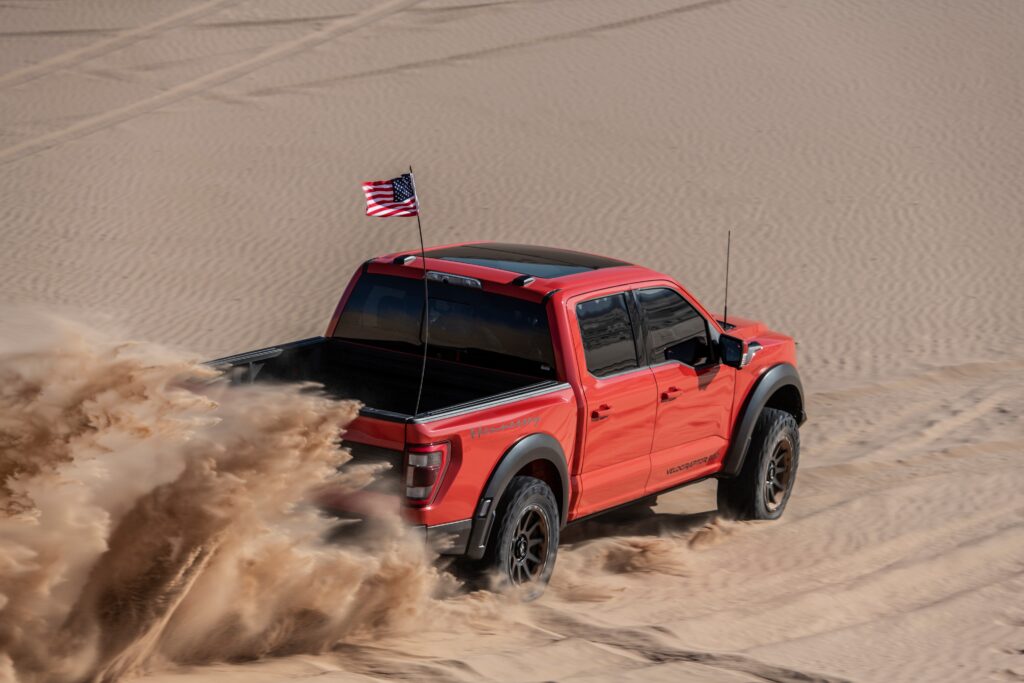Hennessey’s new VelociRaptor 600 had to climb shifting sand dunes and endure temperatures exceeding 100°F (~40°C) at the Glamis Sand Dunes, California’s largest mass of windblown sand, to confirm it meets off-road ability targets. The truck tackled extreme inclines to climb 300ft high dunes, underwent punishing launches and was driven at high speed across the sand. To test the powertrain and suspension at the limit, engineers sprinted up steep dunes and executed multiple high-speed jumps.
Prior to this, the VelociRaptor 600 and Mammoth 1000 TRX had been assessed up the freezing mountains of Colorado where temperatures dip below 10°F (-12°C). The trucks were tested for grip, while the performance of the upgraded engines, intake systems and exhausts was also scrutinized.
The auto maker calls this ‘fire and ice’ durability testing, which subjects a vehicle to brutal conditions across various venues.
John Hennessey, company founder and CEO, said, “Our team builds around 500 high-performance vehicles a year for passionate customers who rightfully expect mainstream manufacturer levels of quality, reliability, and service together with extreme performance. Our torturous ‘fire and ice’ program is the real-world culmination of hundreds of hours of research and development that each model line undergoes at our Texas headquarters. Our goal is to combine ultimate performance with complete peace of mind.”
Testing for all Hennessey models begins at the company’s headquarters in Sealy, Texas. Under the guidance of Hennessey R&D director Jason Haynes, each model line is subjected to hundreds of hours of research and development. This helps guarantee that Hennessey upgrades enhance every aspect of the vehicle while retaining complete usability and manufacturer driving modes.
After lab-based evaluation, development moves to Hennessey’s various on-site dyno bays for live assessment. The final phase sees development models pound the Pennzoil Proving Ground at Hennessey’s headquarters to evaluate the modifications in the real world.


